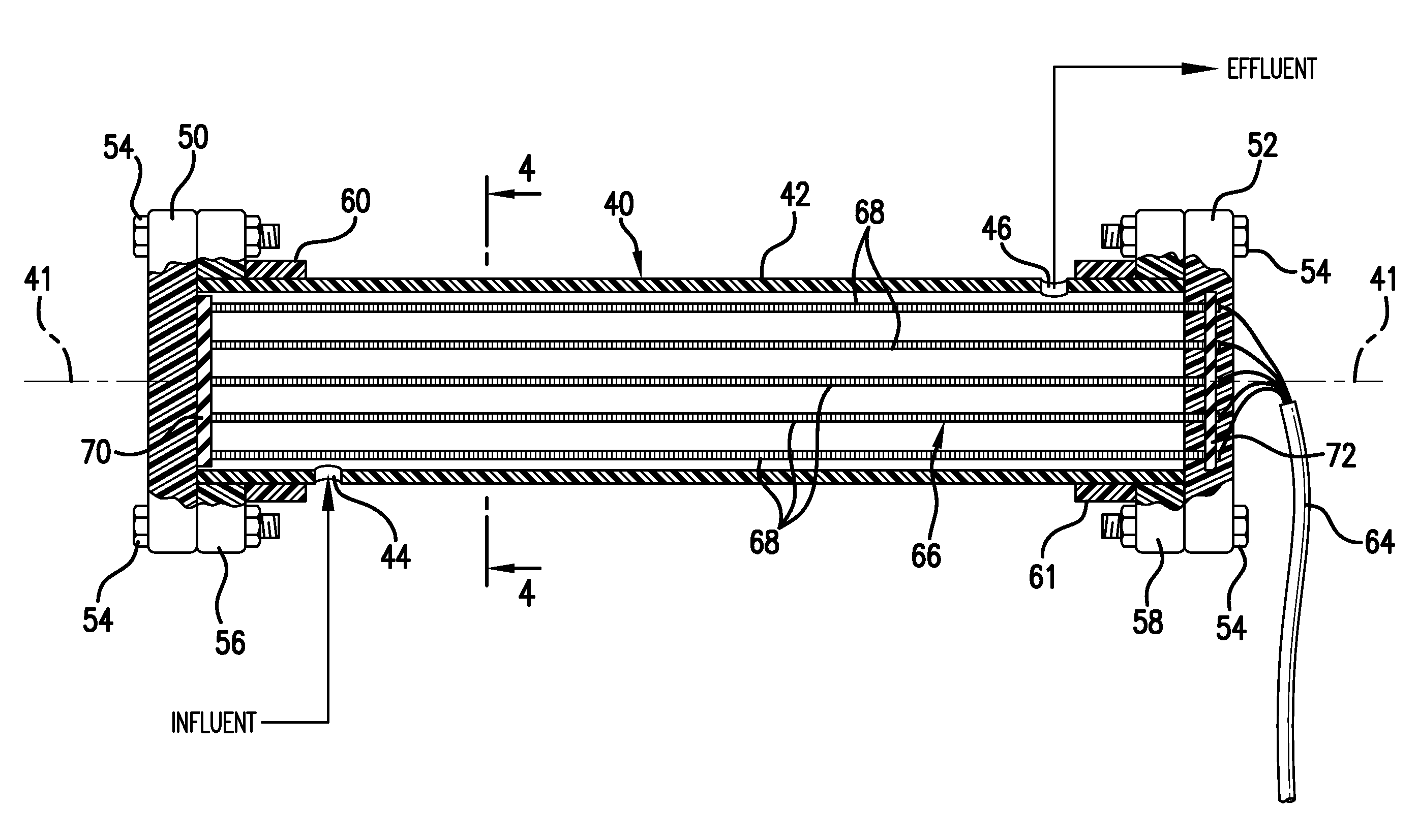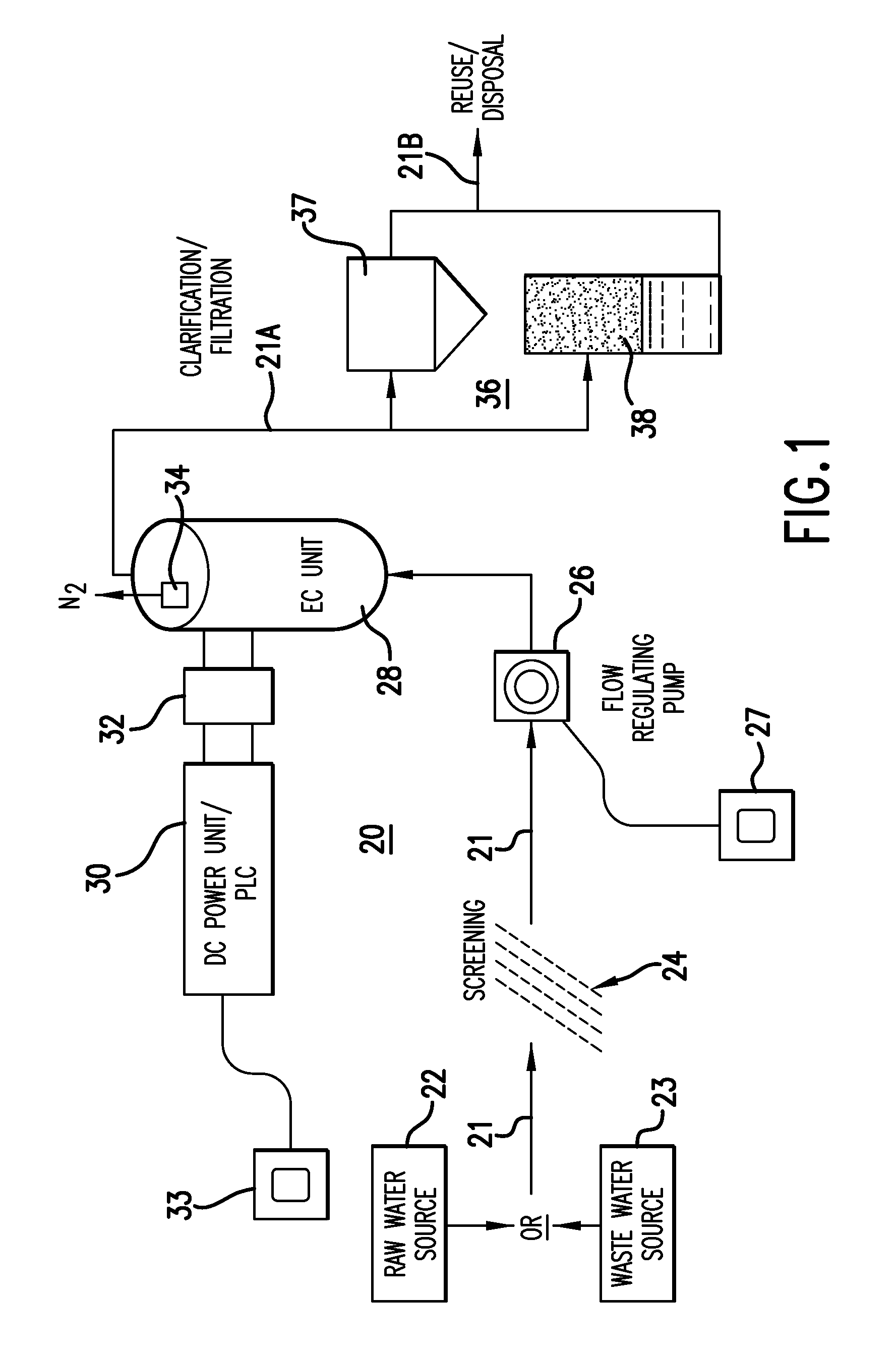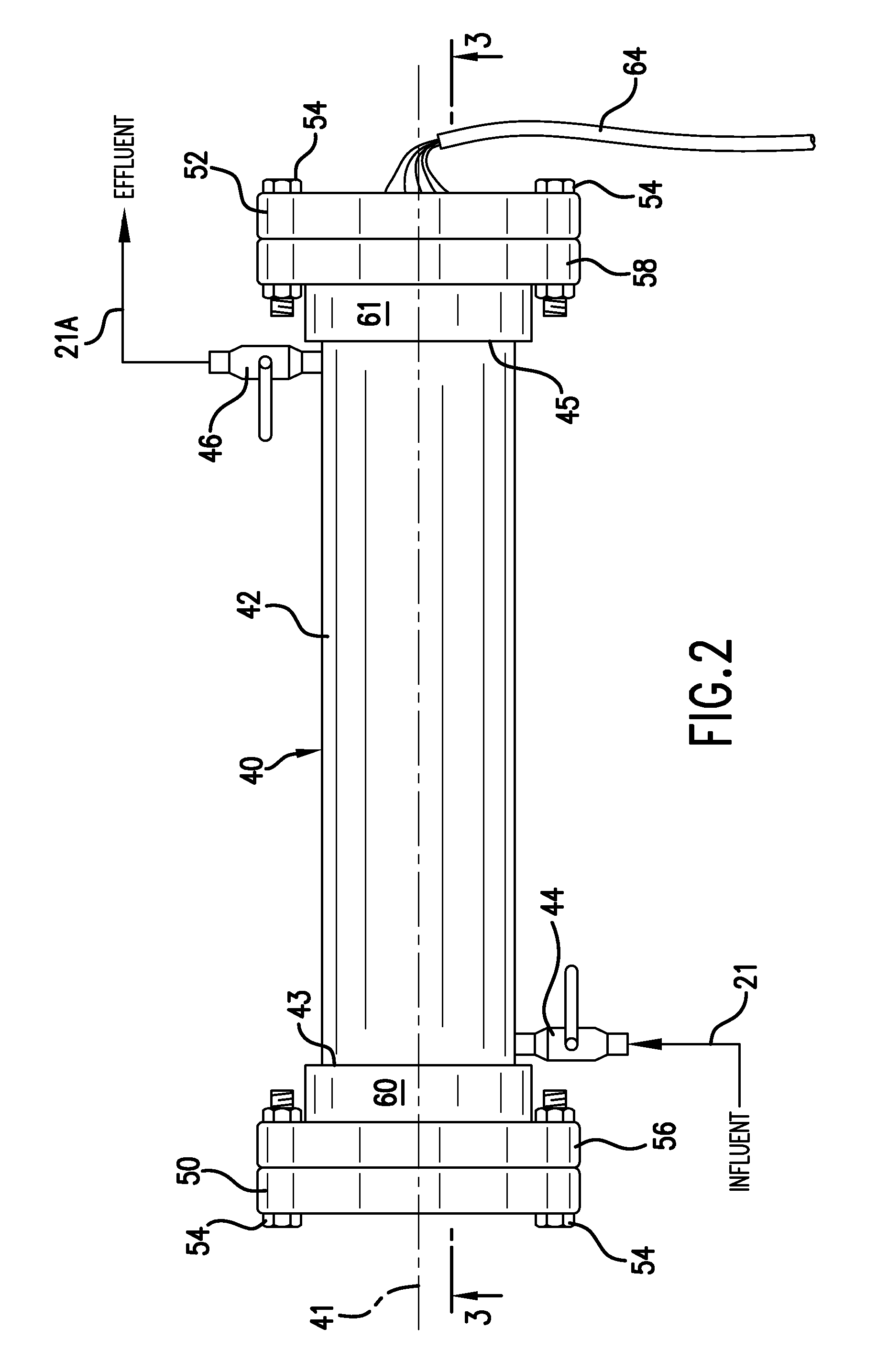Electrochemical system and method for the treatment of water and wastewater
a technology of electrochemical treatment and wastewater treatment, applied in the field of water and wastewater treatment, can solve the problems of prior art efforts to improve systems and electrochemical treatment methods for wastewater treatment, widespread use of chlorine, and elimination of disinfection
- Summary
- Abstract
- Description
- Claims
- Application Information
AI Technical Summary
Benefits of technology
Problems solved by technology
Method used
Image
Examples
second embodiment
[0095]While the module 40 is shown aligned with a horizontal axis in FIG. 2, the module 40 is oriented with a vertical axis 41′ in the invention shown in FIG. 7. This takes advantage of the tendency of gas to flow upwardly allowing gas to vent via a vent 34 now disposed proximate the upper end 43 of the chamber 42 of the module 40.
[0096]The key to successful electrochemical treatment of waste and raw water at atomic and molecular levels is effective application of voltage, amperage, hydraulic retention time and electrode material in combination to provide electrical charge densities on the electrodes and electrical potential between the electrodes to produce a desired electrochemical reaction.
[0097]The following Charts A, B and C cite test data from testing the prototype illustrated in FIGS. 2-7 of the drawings. The parameters used occur within testing ranges initially selected by the inventor, which ranges do not limit the scope of the inventor's invention. The test data establish ...
third embodiment
[0123]Referring now to FIGS. 13-19 there is shown a third embodiment, electrochemical module 200. Referring now specifically to FIGS. 13 and 14, FIG. 13 shows a circular housing 202, while FIG. 14 shows an array of electrodes 204 which are inserted into the housing 202 in order to complete each of the assembled electrochemical modules 200 shown in FIGS. 17-19.
[0124]The housing 202 of FIG. 13 is made of a dielectric material such as polyvinylchloride (PVC) or of Fiberglass and includes a barrel portion 206 that receives the electrode array 204 and inlet 208 that receives contaminated water 21 (see FIG. 1) that is to be treated by the electrode array 204. The water 21 treated within the barrel exits through an outlet 210 for further treatment by the clarification / filtration station 36 (see FIG. 1).
[0125]The completed module 200 is formed upon placing an O-ring seal 202; at the upper end 214 of the housing 202, sliding the electrode array 204 into the barrel 206; securing the flange 21...
PUM
| Property | Measurement | Unit |
|---|---|---|
| Length | aaaaa | aaaaa |
| Length | aaaaa | aaaaa |
| Time | aaaaa | aaaaa |
Abstract
Description
Claims
Application Information
 Login to View More
Login to View More - R&D
- Intellectual Property
- Life Sciences
- Materials
- Tech Scout
- Unparalleled Data Quality
- Higher Quality Content
- 60% Fewer Hallucinations
Browse by: Latest US Patents, China's latest patents, Technical Efficacy Thesaurus, Application Domain, Technology Topic, Popular Technical Reports.
© 2025 PatSnap. All rights reserved.Legal|Privacy policy|Modern Slavery Act Transparency Statement|Sitemap|About US| Contact US: help@patsnap.com



